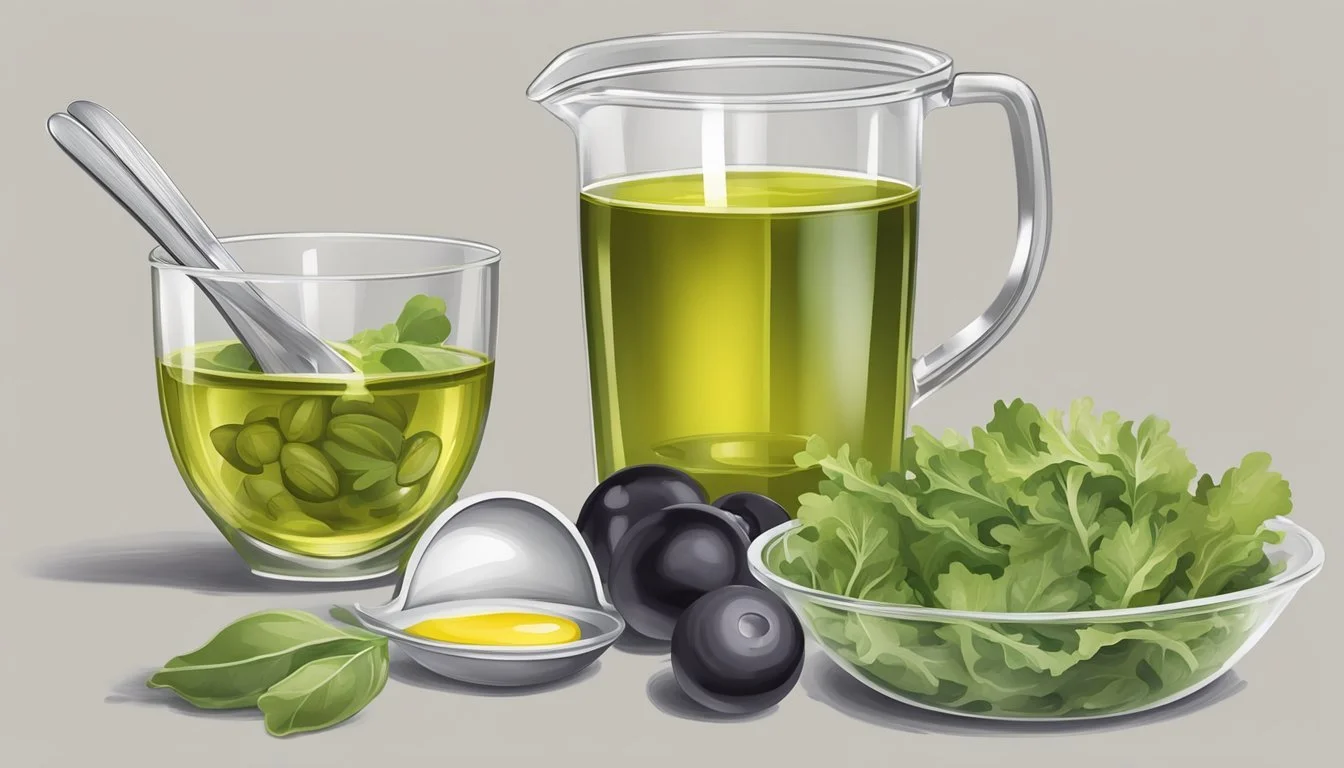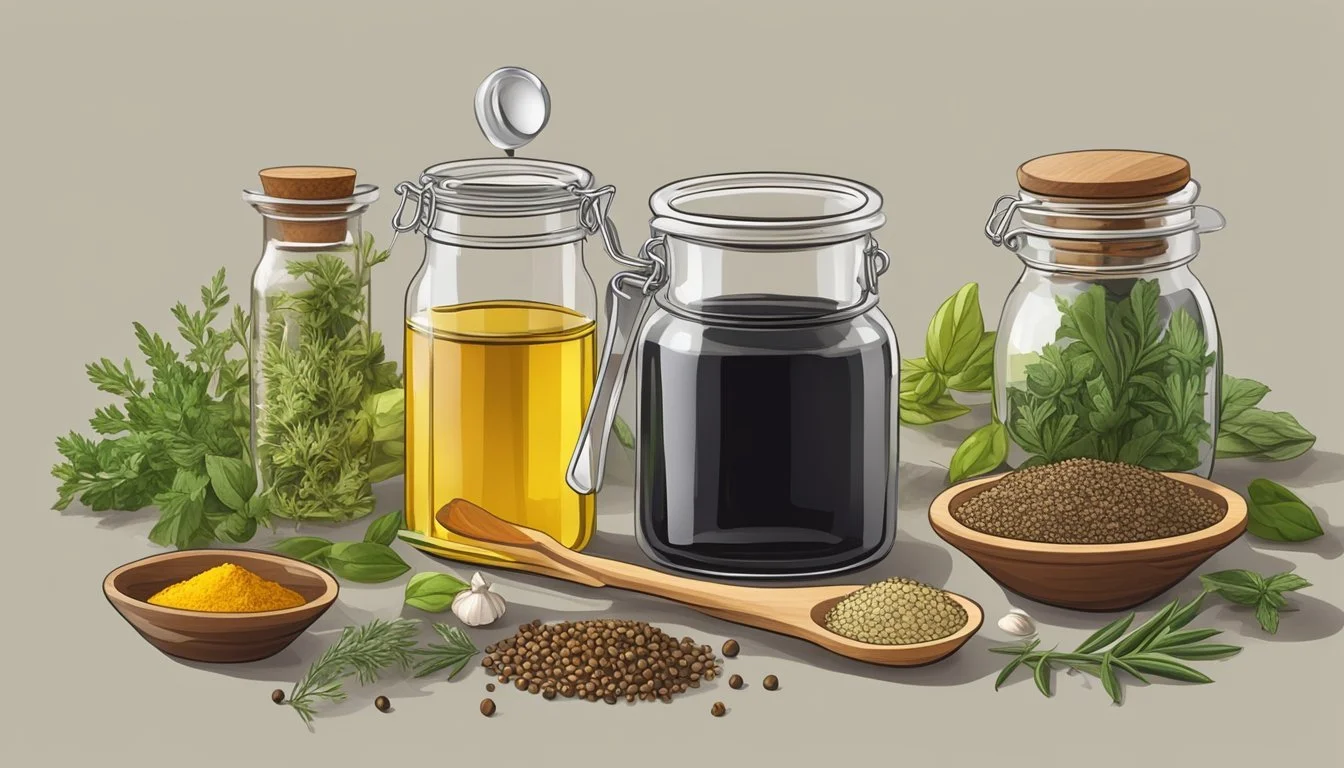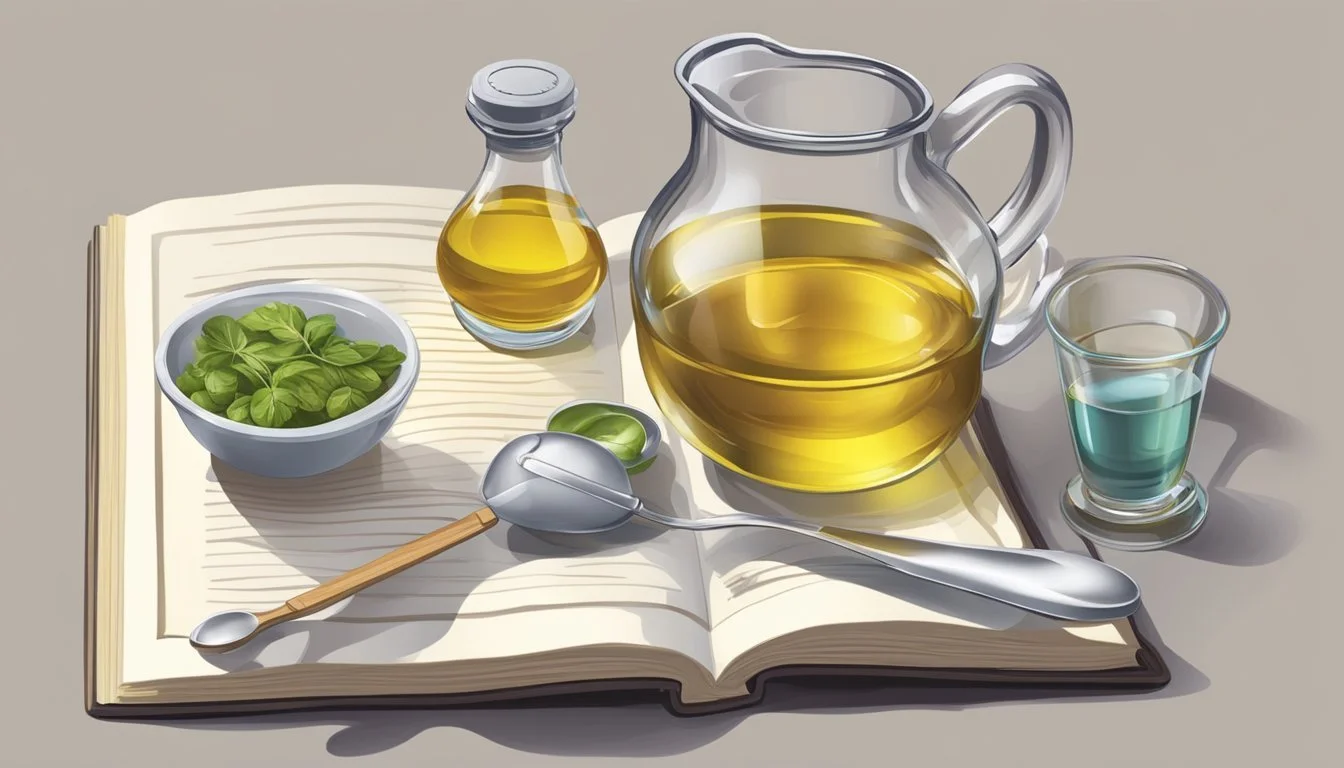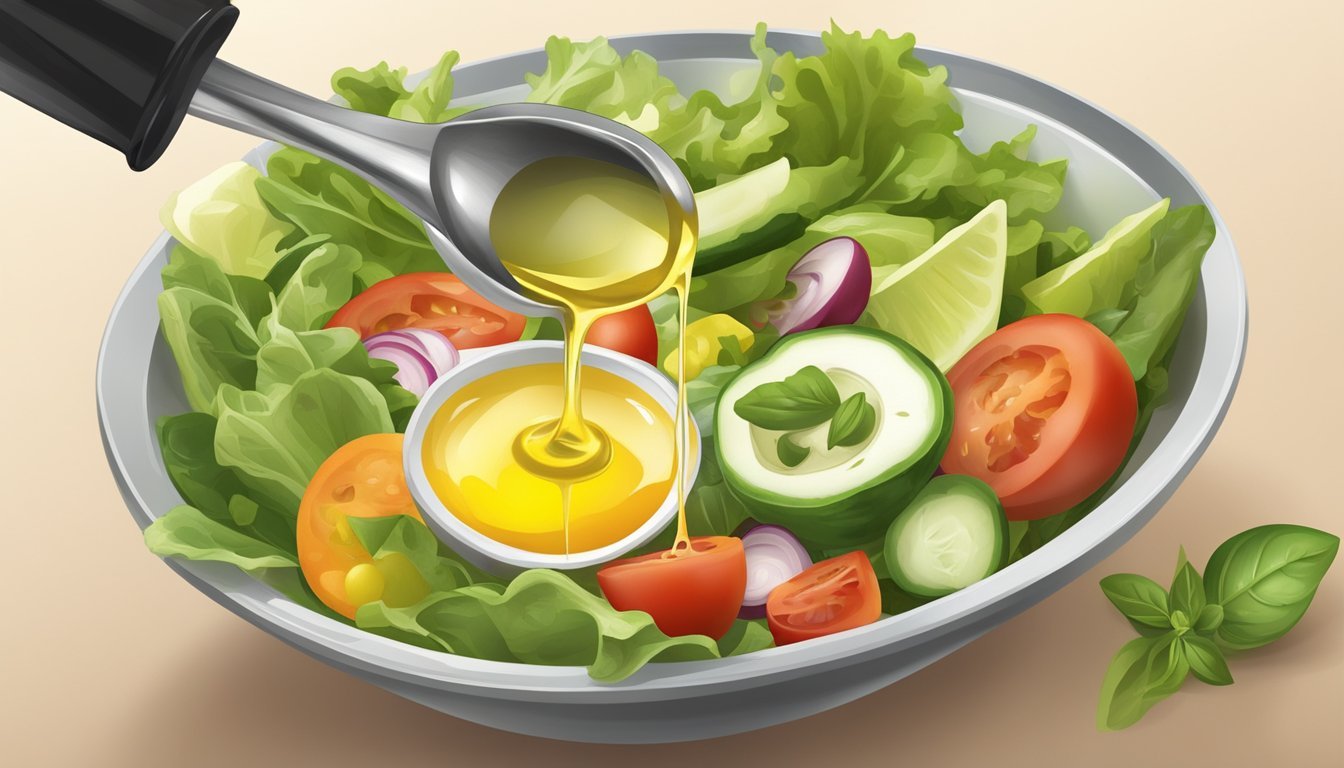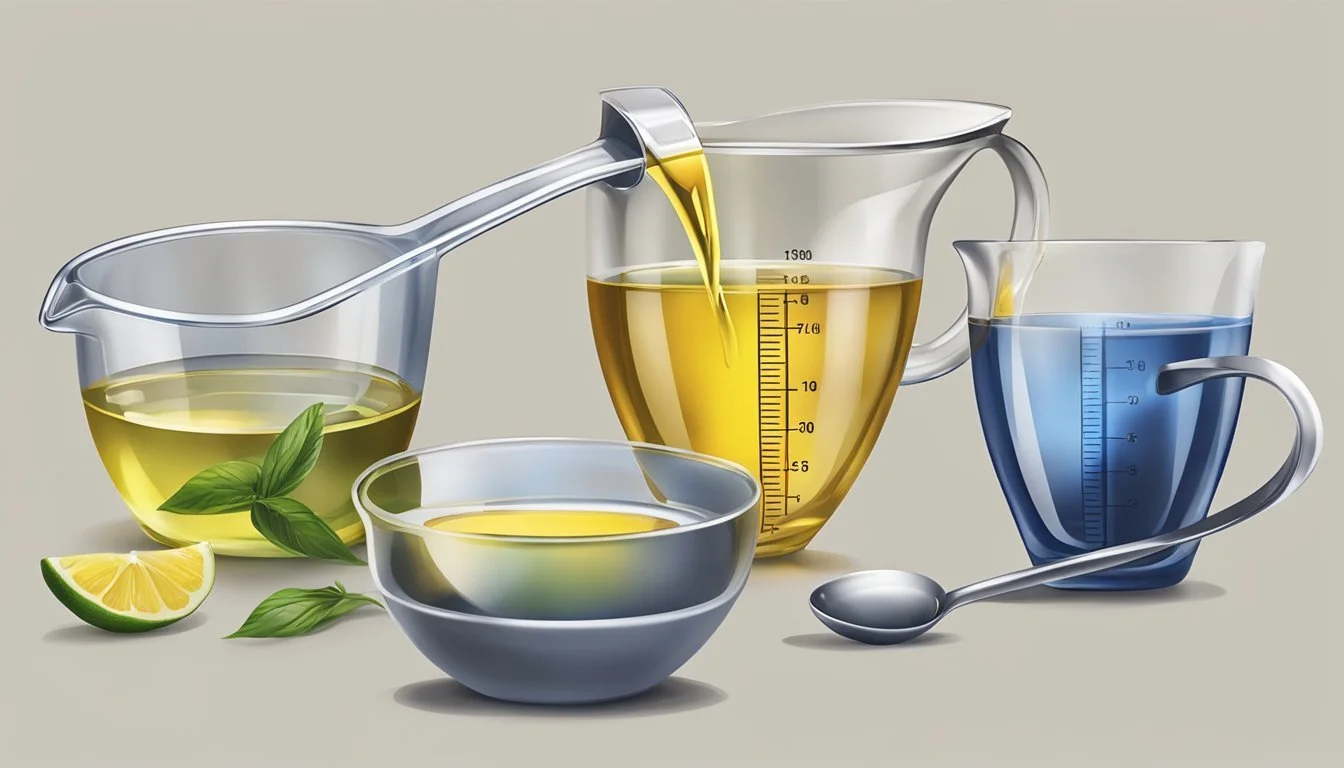How to Measure the Perfect Amount of Oil for Salad Dressing
Accurate Tips for a Healthier Dish
Creating the perfect salad dressing is an art that begins with understanding the balance between oil and vinegar. The right amount of oil in a salad dressing can elevate the flavors and texture of the salad, providing a satisfying mouthfeel and cohesiveness. It's essential to use oil judiciously, as it acts as a carrier for the other flavors in the dressing, such as herbs and spices, while also tenderizing and flavoring the greens.
The cornerstone of a balanced vinaigrette is its ratio, which is traditionally three parts oil to one part vinegar. This proportion ensures that the acidity of the vinegar shines through without overpowering the salad, while the oil tempers the vinegar's sharpness and binds the dressing together. Selecting the type of oil is also crucial; oils such as extra-virgin olive oil, canola oil, or specialty nut and seed oils contribute their unique flavors and can complement different types of salads.
It's important to measure oil accurately, as too much can result in a greasy dressing, whereas too little may leave the salad dry and underdressed. Pouring the oil gradually while whisking constantly helps to create an emulsified and stable dressing that evenly coats the salad ingredients. Taste testing is a key step in the process, allowing adjustments to be made for personal preference or to accommodate the specific greens used.
Understanding Salad Dressings
Creating the perfect salad dressing is about balancing flavors and textures, with oil as the key foundation. This section will guide the reader through the essential components and choices one must consider for crafting a harmonious dressing.
Basic Components of a Dressing
A standard salad dressing consists of oil and an acidic component, typically vinegar or citrus juice, combined in a balanced ratio. The traditional guideline for this mixture is one part acid to three parts oil, which creates an emulsified and flavorful dressing.
Types of Oils and Their Impact
Different oils bring unique attributes to a dressing:
Olive Oil: Offers a fruity flavor; extra virgin olive oil is less refined, providing a stronger taste.
Sesame Oil: Adds a nutty, Asian-inspired taste.
Avocado Oil: Imparts a creamy texture and mild flavor.
Walnut Oil: Introduces a robust, nutty essence.
Coconut Oil: Rarely used due to solidity at room temperature.
Choosing the right oil affects the dressing's flavor profile and health benefits.
Choosing the Right Vinegar
Vinegar can be bold or subtle:
White Wine Vinegar: Mild and slightly acidic.
Balsamic Vinegar: Sweet with a rich depth.
Red Wine Vinegar: Robust and tangy.
Apple Cider Vinegar: Fruity and slightly sweet.
Rice Vinegar: Delicate and slightly sweet.
Consider the salad's ingredients to select a complementary vinegar.
Role of Emulsifiers
Emulsifiers such as mustard, mayonnaise, tahini, or egg yolks help to blend and stabilize oil and vinegar. They allow the dressing to remain cohesive and prevent separation.
The Importance of Acids
Acids add brightness and cut through the fat:
Lemon: Provides a fresh, zesty note.
Citrus Juice: Adds a sweet-tart profile.
Including an acidic component is crucial to achieving a balanced dressing.
Including Sweet and Savory Elements
Sweeteners such as sugar, honey, maple syrup, or agave can counteract acidity. Savory items like salt, pepper, garlic, and shallots add complexity and enhance the dressing's flavor profile.
Herbs and Seasonings to Enhance Flavor
Both fresh and dried herbs—such as parsley, dill, cilantro, oregano, basil, or tarragon—invigorate dressings with their distinct flavors. For additional zest, consider ingredients like caperz (What wine goes well with capers?) or specialty seasonings to tailor to the salad's theme.
Salad Dressing Recipes
In this section, one will learn how to craft the perfect salad dressing with varied ingredients, ensuring the right balance and flavor for an array of salads. The recipes provided aim for simplicity and versatility.
Classic Vinaigrette Recipe
A classic vinaigrette carries a simple ratio: 3 parts oil to 1 part vinegar. For a standard serving:
Ingredients:
3/4 cup oil (olive oil preferred)
1/4 cup vinegar (red wine or balsamic)
1 teaspoon Dijon mustard
Salt and pepper to taste
Instructions:
In a bowl, combine vinegar, mustard, salt, and pepper.
Slowly whisk in the oil until the mixture is emulsified.
For a single serving, one might use one tablespoon of vinegar to three tablespoons of oil.
Exploring Variations and Flavors
One may explore diverse flavors by adding various ingredients to the base vinaigrette recipe:
Replace half of the vinegar with fresh lemon juice.
Garlic Vinaigrette:
Add minced garlic to taste.
Use balsamic vinegar for a sweeter and richer flavor.
Nut Oil and Miso:
Incorporate nut oil and a teaspoon of miso paste for an Asian twist.
Avocado or Tomato Paste:
Blend in avocado or tomato paste for creamy texture and flavor.
Dressings for Specific Salad Types
The dressing should complement the ingredients of the salad it's intended for:
Leafy Greens:
Opt for a lighter vinaigrette with lemon juice and a touch of honey.
Roasted Vegetables:
A bolder balsamic or red onion vinaigrette pairs well.
Asian-Inspired Salads:
A ginger vinaigrette with rice vinegar and sesame oil enhances the flavors.
Always taste and adjust the seasoning of dressings before serving them with their respective salads.
Techniques for Measuring and Mixing
Creating the perfect salad dressing requires precision and a bit of culinary finesse. The section below guides the reader through essential techniques to measure and mix oil and vinegar for a dressing, ensuring a balance of flavor and texture.
Determining the Perfect Oil-to-Vinegar Ratio
For a classic vinaigrette, the standard ratio is 3 parts oil to 1 part vinegar. This balance provides a smooth, emulsified texture with just enough acidity. One can experiment with the ratio to suit personal taste, but starting with this basic formula offers control over the dressing's flavor profile.
Using Kitchen Tools
Accurate measurement is essential to maintain the proper ratio. Using measuring spoons and cups is recommended for precision. When mixing, a mason jar, bowl, or blender can be used depending on the quantity and desired consistency. A mason jar is particularly useful for both mixing and storing dressings.
Mastering the Art of Whisking
Whisking is a simple yet effective method to emulsify oil and vinegar. Start by adding vinegar, an emulsifier like mustard, and any seasonings into a bowl. While whisking vigorously, slowly drizzle in the oil to ensure each droplet is thoroughly mixed. This technique is key for a smooth, well-incorporated vinaigrette.
The Shake and Combine Method
A straightforward and easy alternative to whisking is the shake method. Combine all ingredients in a sealed jar and shake vigorously until the mixture is well-emulsified. This method is not only efficient but also offers quick cleanup and control over the mixing process.
Customizing and Experimenting
Crafting the perfect salad dressing involves more than measuring oil; it requires understanding the harmony of flavors and the joy of adding personal touches. This section will explore the art of balancing flavors, experimenting with various add-ins, and developing a unique signature dressing.
Balancing Flavors
The key to a successful dressing lies in the delicate balance between oil, acid, and seasoning. For a classic vinaigrette, a common starting ratio is 3:1, three parts oil to one part vinegar. Adjusting this ratio can fine-tune the dressing to one's taste:
Acidic Component: Use vinegars like balsamic, apple cider, or red wine, or citrus juices like lemon or lime.
Oil Component: Opt for oils like extra virgin olive oil, avocado, or a more neutral oil such as grapeseed.
Seasonings: Start with sea salt and black pepper. For more complex flavors, consider adding minced garlic, a pinch of sugar to counterbalance acidity, or red pepper flakes for heat.
Experimenting with Add-Ins
Dressings offer a canvas for culinary creativity. Incorporating add-ins can elevate a simple vinaigrette:
Fresh Herbs: Chop basil, thyme, or parsley for a fresh flavor.
Dried Herbs: Oregano and dill work well when fresh herbs aren't available.
Aromatics: Garlic cloves, minced shallots, or red onion add depth.
Textures: Consider adding chopped nuts or seeds for crunch.
Analysing the interaction of these elements during cooking can turn a mundane dressing into a memorable marinade or sauce.
Creating a Signature Dressing
Developing one's signature dressing often begins with classic recipes and evolves with personal preferences:
Start Simple: Begin with standard oil and vinegar, then add salt and pepper.
Adjust Ratios: Modify the oil-to-vinegar ratio based on whether a heavier or lighter dressing is desired.
Personalize: Integrate favorite flavors, such as a hint of lemon zest, or a teaspoon of sugar for balance.
Document: Keep track of modifications to replicate the success of the dressing in future cooking endeavors.
Remember, there's no single "correct" recipe for salad dressing—it's about what tastes right to the individual.
Nutritional Considerations
When measuring oil for salad dressing, it's important to consider the nutritional impact it has on the overall dish. The oil's caloric and fat content, sodium and sugar levels, and the potential for incorporating healthier options should be carefully weighed.
Caloric and Fat Content
Oil is high in calories and fat, including saturated fat, which can be a concern for those monitoring their caloric intake or trying to maintain a healthy diet. A tablespoon of oil typically contains about 120 calories and 14 grams of fat. Here is a breakdown for some commonly used oils in salad dressings:
Olive Oil: Approximately 120 calories and 14 grams of fat per tablespoon.
Avocado Oil: Similar to olive oil, with around 124 calories and 14 grams of fat per tablespoon.
Nut Oils (such as walnut): Roughly 120 calories and 14 grams of fat, but often higher in polyunsaturated fats.
Sesame Oil: About 120 calories and 14 grams of fat, often used in smaller quantities for its robust flavor.
Sodium and Sugar Levels
While oil itself does not contain sodium or sugar, these ingredients are often added to salad dressings for flavor. It is crucial to monitor these additions, especially for those concerned with sodium intake. Using sea salt can provide trace minerals, but the key is to use it sparingly as it still contributes to sodium consumption. Sugar, whether white, brown, or in the form of syrups, should be used minimally to avoid turning a healthy salad into a high-calorie meal.
Incorporating Healthier Options
Seeking healthier alternatives can significantly improve the nutritional quality of a salad dressing. Here are some suggestions for making healthier choices:
Opt for olive oil or avocado oil for their heart-healthy monounsaturated fats.
Use nut oils sparingly due to their beneficial omega-3 fatty acids but higher calorie content.
Consider diluting dressings with vinegar, lemon juice, or fat-free, low-sodium broth to reduce the total fat content without compromising flavor.
Enhance taste with fresh herbs, garlic, or spices instead of relying on salt and sugar to reduce sodium and calorie intake.
Remember, moderation and balance are key in creating not just a delicious but also a nutritious salad dressing.
Storing and Serving Tips
For optimal freshness and flavor, one must be mindful of how a homemade dressing is stored and eventually served. This attention to detail ensures the vibrant taste of dressings enhance, rather than detract from, the salad's leafy greens.
Proper Storage for Freshness
When storing homemade dressing, a mason jar is ideal due to its airtight seal which preserves freshness. The key points for storage are:
Temperature: Keep the dressing refrigerated to maintain freshness, ideally between 35-38°F (1.7-3.3°C).
Container: Use a glass mason jar or a container with a tight-fitting lid to prevent oxidation and flavor loss.
Duration: Homemade dressing can last up to 2 weeks when properly stored.
Solidification: If the oil solidifies, let the dressing sit at room temperature for a few minutes and shake well to recombine the ingredients.
Labeling: Always label your dressing with the date it was made to keep track of its shelf life.
Serving Recommendations
To serve a homemade dressing that enhances salads:
Preparation: Shake or whisk the dressing right before drizzling it over the salad to ensure the oil and vinegar are well combined.
Ratio: Aim for about 1 tablespoon of dressing for each 2 cups of leafy greens to prevent the salad from becoming soggy.
Application: Pour the dressing along the sides of the bowl and gently toss the salad for even coverage without overwhelming the greens.
By following these storage and serving guidelines, the homemade dressing will elevate any salad with its full flavor and the right consistency.
Conclusion
In the art of cooking, crafting the perfect salad dressing is as much about precision as it is about taste. A homemade vinaigrette, an emulsion of oil and vinegar, hinges on the balance between its two key ingredients. The standard ratio is typically three parts oil to one part vinegar, which provides a harmonious blend of richness and acidity.
When measuring oil for a vinaigrette, chefs should consider both the flavor of the oil and its interaction with the vinegar. A neutral oil allows the other dressing components to shine, while a more pronounced oil, like extra virgin olive oil, contributes its own character to the dressing.
To ensure a well-emulsified dressing:
Start with vinegar: Add seasonings to taste—salt, pepper, or mustard—which also aids emulsification.
Gradually add oil: Drizzle oil slowly while whisking continuously, allowing the mixture to thicken and combine.
For those seeking a lighter dressing, they may adjust the ratio, using a bit more vinegar or less oil without compromising the emulsification.
Remember, the quality of the ingredients dictates the overall flavor of the dressing. A vinaigrette made with high-quality, fresh ingredients - including the oil and vinegar - will invariably taste better and elevate any salad. With this knowledge and a little practice, anyone can confidently master the craft of a delightful homemade vinaigrette.

